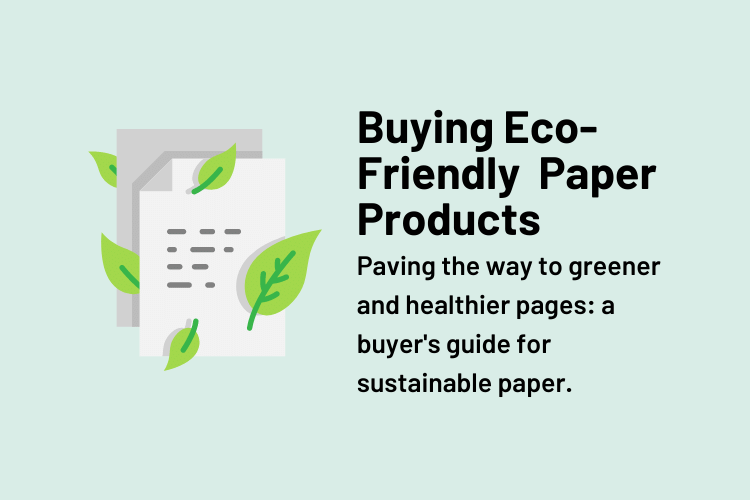
We all use paper throughout the day for a variety of purposes. But what impact do our paper purchases have on the environment, and what can you do to make more sustainable paper choices?
Here is some useful information for making eco-friendly paper purchases:
Why it’s important to buy sustainable paper products
We use paper all day long without thinking about it, and yet this habit has widespread consequences for our natural environment:
- Deforestation: Producing paper from virgin wood fibers requires that we cut down trees, but these amazing plants are necessary for our environment as they make oxygen, filter the air, regulate climate, protect soil from erosion, provide habitat for more than 80% of all land-dwelling species, and more. About 40% of all the wood consumed worldwide every year goes to papermaking.
- Toxins from paper production: Chemicals such as methanol, chlorine dioxide, formaldehyde, and toluene are used to process wood pulp into paper products.
- Papermaking and dioxins: Hydrochloric acid (bleach) is used to whiten paper products, which means bleach is flushed into waterways where it can combine with organic compounds in the environment to form dioxins which are carcinogenic and can cause hormone disruption and immune system toxicity, as well as contribute to a whole host of other health problems including birth defects, increased risk of diabetes, and endometriosis. Dioxins also harm animals and aquatic life, poison air, and contaminate water supplies that we drink. Whitening alternatives using ozone or hydrogen peroxide exist and are much safer (see the research report on Chlorine-Free Paper).
Choosing eco-friendly paper
Though reading electronically and learning to store files online rather than in file cabinets can take some time to get used to, there are some instances where nothing but paper will do. In that case, we recommend you look for eco-paper options that meet the following criteria:
- Look for paper made with a minimum of 50% post-consumer recycled content.
- When 100% recycled paper is not available, look for paper that has (Forest Stewardship Council) FSC-Certified virgin fibers. Don’t be fooled by other certifications – the SFI certification, for instance, sounds good, but it is a program administered by the paper and pulp industry and it has been accused of greenwashing.
- Look for unbleached paper by seeking out paper that is either marked processed chlorine-free (PCF), which is preferred over totally chlorine-free (TCF). Elemental chlorine-free is okay, but not a great option.
- Look at where the paper was manufactured to ensure your eco-paper purchase has the shortest transportation distance from your location, thus decreasing greenhouse gas admitted.
Paper makers are constantly evolving to meet consumer demand for eco-friendly papers. So we recommend checking out the EcoPaper Database (EPD) for an up-to-date list of the greenest, 100% recycled, chlorine-free paper options around. Additionally, EPD FAQs, including the tutorial how to navigate the EPD, are available here.
